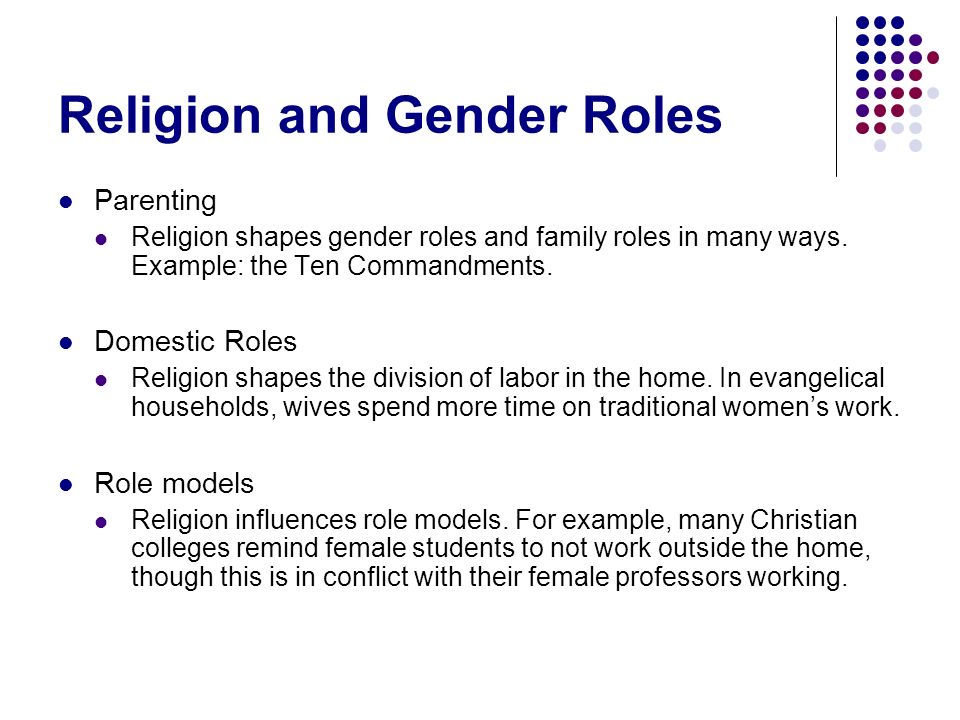Gender roles in parenting
Gender stereotyped parenting influences early child social development
Gender stereotyped parenting influences early child social developmentPhoto: K’s GLIMPSES. Creative Commons.
By Child & Family Blog Editor and , | October 2018
SHARE ARTICLE VIA:
Mothers and fathers convey gender stereotypes when parenting. Conditioning early childhood by gender has long-term influences on social development.Judi Mesman and Marleen Groeneveld at Leiden University in the Netherlands recently reviewed research on how parents influence children’s socialization to gender roles. This conditioning of early childhood has long-term influences on children’s social development.
Parents in Western societies generally deny that they stereotype their children by gender. Research has found that this is particularly true in more gender-egalitarian societies, where promoting gender stereotyping is more likely to be frowned on.
When it comes to general parenting practices in early childhood – being warm, being sensitive and applying parental control – differences in the treatment of boys and girls are small. Yet differences appear in “implicit” parenting practices. As soon as a child is identified as a boy or a girl, parents form expectations about the child’s interests, skills and behaviors, and these expectations appear in gendered parenting practices. Mesman and Groeneveld define gendered parenting thus:
“From the decision to paint a baby’s room pink or blue onward, many parents take their young children’s sex as a guiding principle for minor and major socialization decisions regardless of their children’s individual characteristics and behaviors. This is referred to as gendered parenting – the messages children receive from their parents related to how boys and girls should and should not behave.
”
The authors define two types of implicit gendered parenting in early childhood: (1) direct messages conveyed to the child about his or her own behavior and (2) indirect commentary on the behavior of others.
Direct gender messages to sons and daughters during early childhood
Much research has examined how parents choose films, books and commercial products differently for boys and girls, even if these parents do not endorse gendered messages explicitly. When parents consistently buy female-stereotyped toys such as dolls and tea sets for their daughters, or male-stereotyped toys such as trains and dinosaurs for their sons, they implicitly link their children’s sex to gender roles. These roles are encouraged as the children play with the toys in different ways.
Parenting may also respond differently to disruptive behaviour in boys and girls. Studies have shown that mothers respond less negatively to a son’s risky and disruptive behavior and are less likely to encourage a son’s prosocial behavior.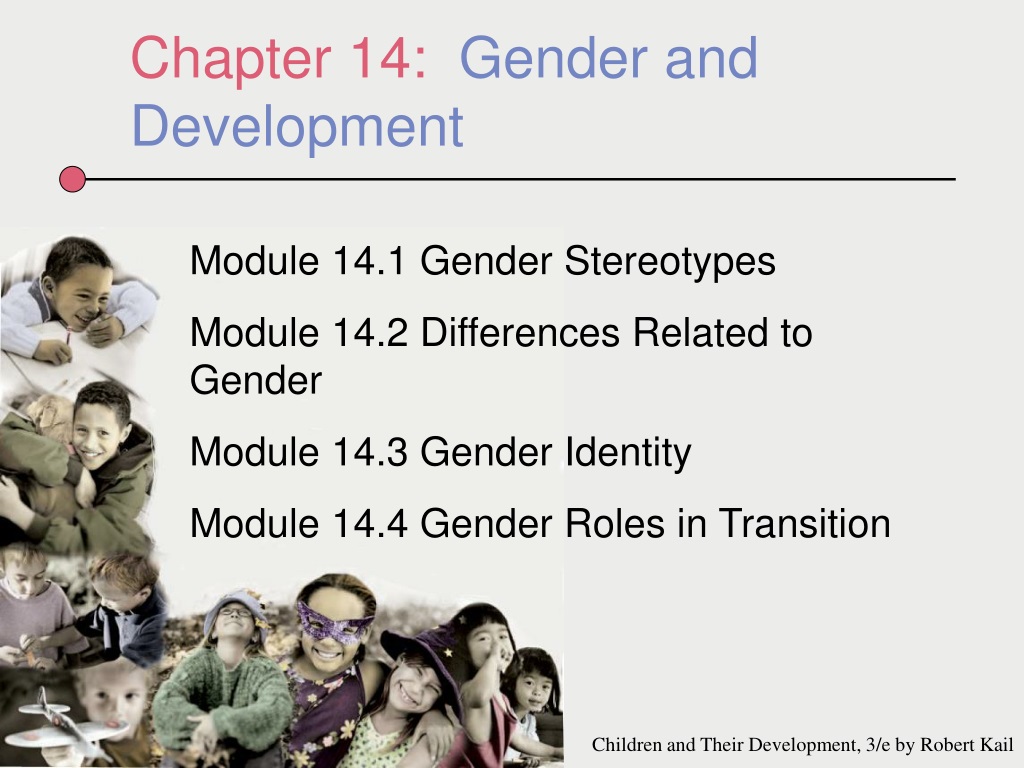 This is consistent with the stereotype that boys are risk takers and challenging, but girls are nice to others.
This is consistent with the stereotype that boys are risk takers and challenging, but girls are nice to others.
Indirect messages to the child about the behavior of others
When researchers observed parents reading books with their toddlers, they found that mothers tended to comment more positively about drawings of children doing stereotypical activities than about those doing the opposite. Fathers commented even more often than mothers to confirm gender stereotypes. Fathers with two boys made fewer negative comments about drawing of boys being mean than about drawings of girls being mean. In the same study, both mothers and fathers were more likely to label sad children as female and angry children as male, even though the children were drawn in a gender-neutral way.
Parents also convey indirect messages during early childhood via how the household is organised. They may model stereotypical male and female behaviour in the way they divide work, care and housework. Because children generally identify more with the parent of their own sex, they are motivated to imitate that parent’s interests and activities.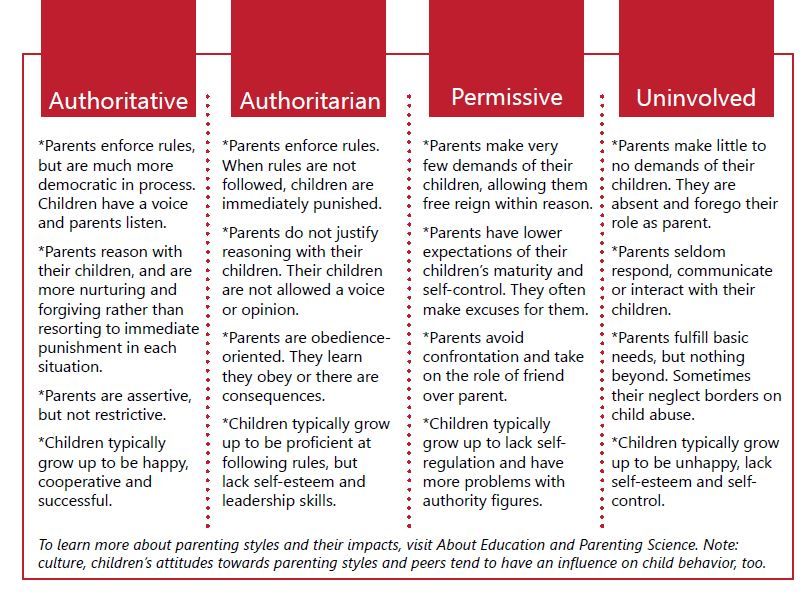
Biology or nurture?
Researchers acknowledge that biological factors are involved. For example, boys are more physically active in general during early childhood, and parents’ greater use of physical force with boys may reflect this.
However, researchers also observe that parents apply gender stereotypes early in children’s lives, before many differences appear. A now classic piece of research showed that adults treated babies dressed in blue and in pink differently, regardless of their sex.
Parents from different social and cultural backgrounds also approach parenting differently., with people from lower-income backgrounds being more likely to endorse traditional gender roles. Few studies have looked at non-Western cultures or ethnic-minority families, however.
Parents’s beliefs and actions in relation to children’s socialization to gender roles
Research has shown that parents with stronger gender stereotyped beliefs are more likely to parent in gendered ways.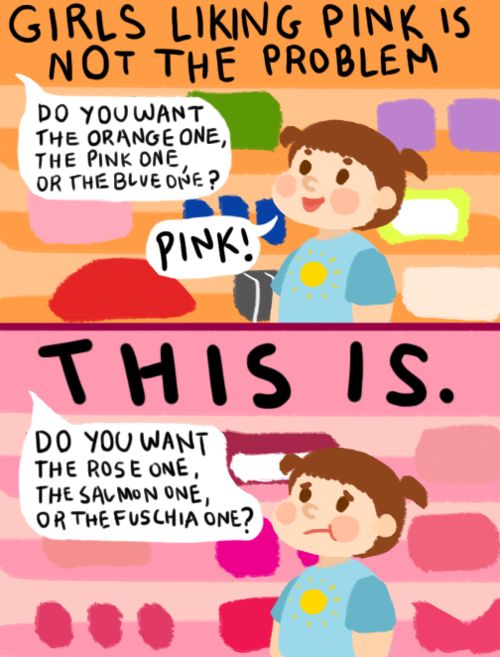 In one study with toddlers, fathers with more stereotypical gender attitudes used more physical control with sons than with daughters.
In one study with toddlers, fathers with more stereotypical gender attitudes used more physical control with sons than with daughters.
The difference between what parents say against stereotyping and do in favour of it could be deliberate subterfuge, or they could genuinely be unaware of it. In the pink/blue baby experiment, for example, the parents did not realise they were treating the babies differently.
What is the impact of gendered parenting on children’s social development?
The primary source of social learning in early childhood is interaction with parents. Researchers refer to “vicarious social learning” – when talking about their own actions and behaviors, children pick up on parents’ gender evaluationss. Children notice salient social models of gendered behavior around them.
Children then use these ideas and expectations and apply them in similar situations. For example, a girl who has imitated her mother doing housework is more likely to assume that housework is for girls when playing, and then assume that chores are for girls in other settings.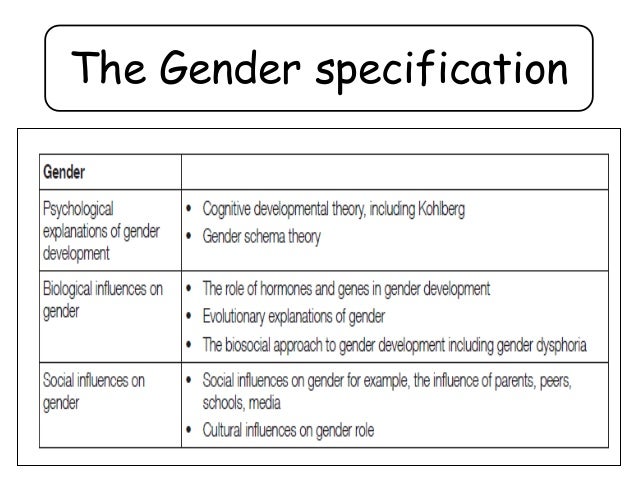
Research shows that gender-stereotyped parenting in early childhood has an influence later in life. Children from families with traditional gender roles are more likely to have gender-stereotypical expectations themselves.
In the study referred to above, fathers who had more gender-stereotyped beliefs were more likely to use more physical control with their boys than with their daughters and this predicted more aggression in their sons than in their daughters.
Is a gender-stereotypical early childhood upbringing good or bad?
The authors discuss the impacts of gender-stereotypes in early child upbringing. One could argue that gendered parenting teaches children about the reality of gender role expectations in their social environment, preparing them for later life. On the other hand, if children are raised on the basis of gender rather than their abilities, talent may be wasted and and may be forced into lifestyles and careers that deny personal identities, which also affects well-being. These factors are likely to play out differently in different cultures.
These factors are likely to play out differently in different cultures.
References
Mesman J & Groeneveld MG (2018), Gendered parenting in early childhood: subtle but unmistakable if you know where to look, Child Development Perspectives, 12.1
Article Authors
Child & Family Blog Editor
Read More
Recommended for you
Parents’ Gender Roles Predict Children’s Aspirations and Beliefs
Skip to contentHow do parents’ beliefs about gender and their gendered behaviours affect their children’s aspirations? This study conducted tests with 326 children and their parents to investigate this question. It found that mothers’ explicit beliefs about gender roles – such as associating women with the home and men with work – predicted their children’s beliefs.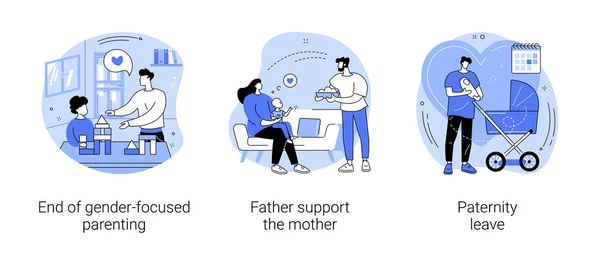 Further, fathers’ participation in domestic work and their implicit beliefs about gender roles specifically impacted their daughters’ aspirations. For example, when fathers contributed to domestic work, daughters were more likely to aspire to less gender-stereotypical occupations. The study suggests that parents’ endorsements of gender equality as well as their household behaviours play an important role for children’s perspectives of gender.
Further, fathers’ participation in domestic work and their implicit beliefs about gender roles specifically impacted their daughters’ aspirations. For example, when fathers contributed to domestic work, daughters were more likely to aspire to less gender-stereotypical occupations. The study suggests that parents’ endorsements of gender equality as well as their household behaviours play an important role for children’s perspectives of gender.
Research has found a significant relationship between parents’ self-reported beliefs about gender roles and the beliefs of their children. However, parents may report an egalitarian belief, but not behave accordingly. This study tested whether parents’ behaviours, as well as their implicit beliefs about gender, also impact children’s aspirations and beliefs.
Researchers recruited 326 children between the ages of 7 and 13, and one of their parents, from a local science centre. Data was collected from December 2011 to August 2012. The study involved several different tests:
The study involved several different tests:
- To uncover parents’ explicit (self-reported) beliefs, researchers gave parents five scenarios involving heterosexual couples and household tasks, and asked them which partner they thought would do more of a household task. Parents were also asked whether they considered themselves more work-oriented or family-oriented.
- To uncover their implicit beliefs, researchers gave parents implicit association tests that showed whether they associated men’s and women’s faces to work or to home.
- To assess their behaviours, researchers asked parents to record how many hours of paid work they did per week, and their contribution to domestic tasks.
- Children were asked whether they thought they would be more work-oriented or family-oriented in the future. They were also asked what they wanted to be when they grew up. Researchers coded this open response as masculine, feminine, or gender-neutral.
Children’s beliefs and self-stereotyping: The study found that when mothers explicitly believed that women are more likely than men to handle domestic tasks, and when fathers explicitly identified as work-oriented, their sons and daughters were more likely to hold gender-stereotypical beliefs.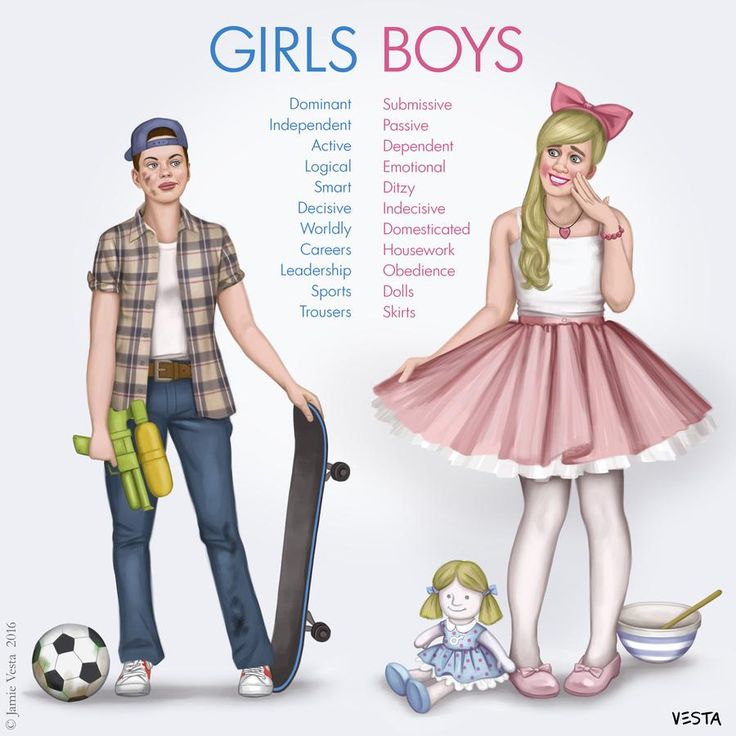
On the other hand, when mothers self-stereotyped as more work-oriented and did relatively less domestic work, and when fathers held explicit egalitarian beliefs about domestic work, they were more likely to have daughters who envisioned working outside the home.
Children’s career aspirations: Fathers’ explicit and implicit beliefs about gender, as well as their domestic contribution, influenced their daughters’ (but not their sons’) career aspirations. Fathers who explicitly endorsed traditional gender roles, had stronger implicit associations of women with the home and men with work, and contributed less to household work, were more likely to have daughters who aspired to stereotypically feminine occupations.
ImplicationsGender stereotyping and inequality starts at home, so policy needs to ensure women can access paid work—This study demonstrates how gender stereotyping is ingrained from a young age and is based on parents’ actions and beliefs. Parents who share domestic work and do not associate women with domestic work are more likely to have children who do not hold gender stereotypical beliefs. To increase gender equality, it is vital that policymakers create policies that facilitate mothers to paid work, such as affordable daycare and paid parental leave.
Parents who share domestic work and do not associate women with domestic work are more likely to have children who do not hold gender stereotypical beliefs. To increase gender equality, it is vital that policymakers create policies that facilitate mothers to paid work, such as affordable daycare and paid parental leave.
Fathers play an important role in mitigating gendered occupational segregation—The findings here suggest that fathers’ participation in domestic work and their beliefs are particularly impactful on daughters’ aspirations. Since fathers’ day-to-day behaviour with their daughters may play an important role in mitigating gendered occupational segregation, fathers have a responsibility to educate themselves on gender equality and equity.
Workplaces must facilitate men’s caregiving roles—Considering the importance of fathers’ roles in their daughters’ aspirations, companies should facilitate men employees to take parental leave so that they are encouraged to be caregivers.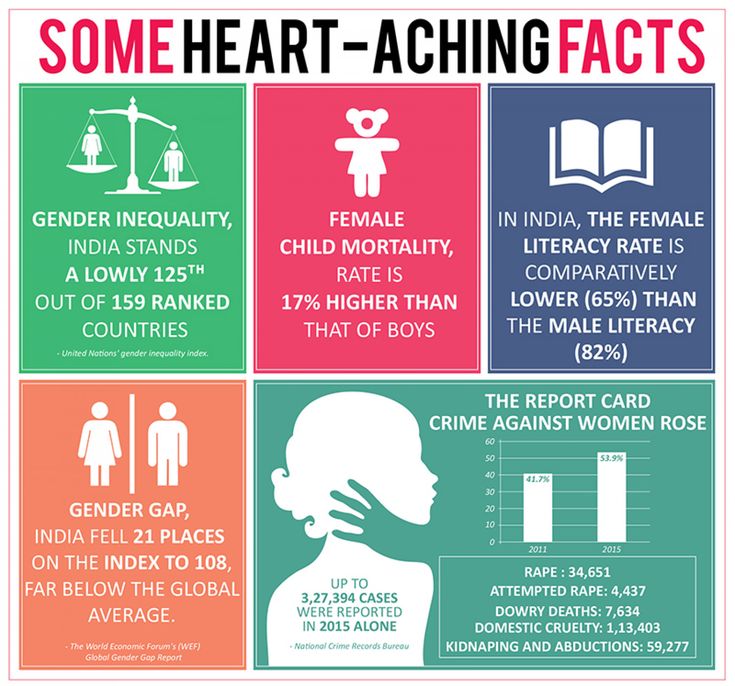 Workplace policies for equal parental leave must be in place alongside strong efforts to change workplace cultural norms so that men do not feel stigmatized for prioritizing family.
Workplace policies for equal parental leave must be in place alongside strong efforts to change workplace cultural norms so that men do not feel stigmatized for prioritizing family.
__________________________
Research brief prepared by: CARMINA RAVANERA
See more research briefs
Title
The Second Shift Reflected in the Second Generation: Do Parents’ Gender Roles at Home Predict Children’s Aspirations?
Authors
Alyssa Croft, Toni Schmader, Katharina Block and Andrew Scott Baron
Source
Psychological Science
Published
2014
DOI
10.1177/0956797614533968
Link
https://journals.aom.org/doi/10.5465/amj.2016.121
Research brief prepared by
Carmina Ravanera
Newsletter
Recent Tweets
Tweets by @GenderEconomy
Page load linkPeculiarities of a gender approach in raising children, basic stereotypes
What is gender education
Gender is the psychological, cultural and social differences between men and women in a particular society.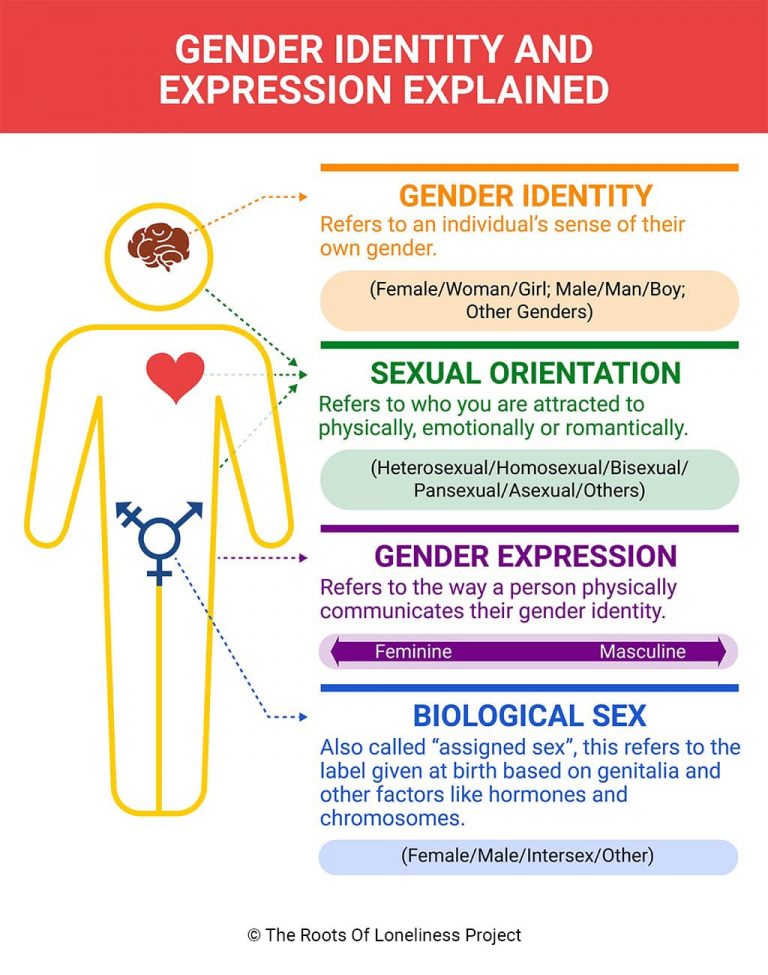 If the biological sex of the child is laid at the stage of the embryo, then gender is formed in the process of education.
If the biological sex of the child is laid at the stage of the embryo, then gender is formed in the process of education.
Psychologists believe that a child begins to realize his gender at the age of 3-4 years, and by the age of 7 the ideas become stable. nine0007
In turn, gender education means raising a child in accordance with the ideas about the role of men and women accepted in a particular society. Gender attitudes are laid in the family: boys associate themselves with their father, and girls with their mother. The tasks of gender education are to help children realize belonging to the male or female sex, adapt to society and start playing by its rules.
There is nothing wrong with the gender approach in upbringing - society is really divided into men and women, and in order to fully integrate, you need to take one of the roles. But the peculiarity of gender education lies in the frequent stereotypes that adversely affect children. nine0005
Gender stereotypes
Gender stereotypes are attitudes about how men and women should be that limit both sexes.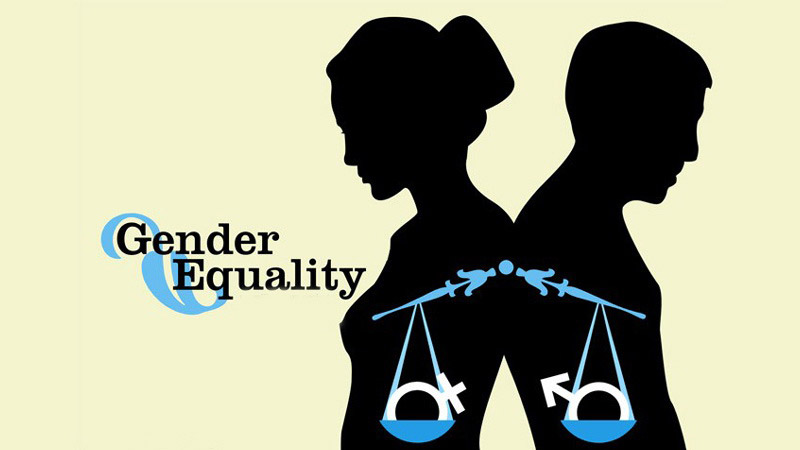
Gender stereotypes are all around us. For example, there is an opinion that “techies” are boys, and “humanists” are girls, and if a young man writes poetry, he may well hear the claim “what the hell, like a girl!”.
Often stereotypes are based on outdated social and political norms. For example, previously women in some countries were not allowed to vote, wear trousers, or hold leadership positions. nine0007
Even before the 20th century, pink was considered “male” and blue was considered “female”. But over time, fashion and pop culture turned everything upside down, and pink quietly began to be considered "girly". Until now, a boy at school can be shamed for a pink T-shirt.
<
Stereotypes do not help to integrate into society, but only limit boys and girls.
“A frequent argument among parents is whether or not to allow a boy to play with dolls and girls with cars? Some are frightened by the thought that a boy will roll a baby carriage on the playground.After all, babysitting children is “a girl’s duty.” Thus, adults do not allow the boy to try on the role of a father, and as a result, men take much less part in the upbringing of children. nine0007 Irina Mironova
<< Form of Demotorpes >>
Gender education at school
In many schools, labor lessons are still undergoing gender division: girls are sewing, boys make stools. School uniforms are required in some organizations, and for girls it is strictly skirts. Sometimes there are even differences between boys and girls in the pace and quality of intellectual development. For example, they say that girls are not good at math, and a boy has the right to write with errors, the main thing is that he fights well. nine0005
“If boys and girls are taught differently based on their gender, the possible consequence is that the idea of inferiority will become entrenched. With such training, the possibilities of individual choice and the personal characteristics of each child are not taken into account.This calls into question the harmonious development of the individual.
Irina Mironova
How to get rid of gender stereotypes
In the West, the fight against gender stereotypes has escalated to radical ways - many people advocate "gender-neutral education", that is, the upbringing of a child without gender. It is believed that the child will be able to independently choose the gender when he grows up.
Psychologists are skeptical about gender-neutral parenting: most likely, such an approach will leave the child without boundaries, deprive him of guidance and lead to emotional instability.
“It is not yet known exactly what will happen to a child if he is brought up in isolation from gender - there are no long studies on this subject. In the current Russian society, this is unlikely - the child will somehow learn the gender-social role from others. nine0007 Irina Mironova
An alternative way is to raise a child as a boy or girl, but free from stereotypes.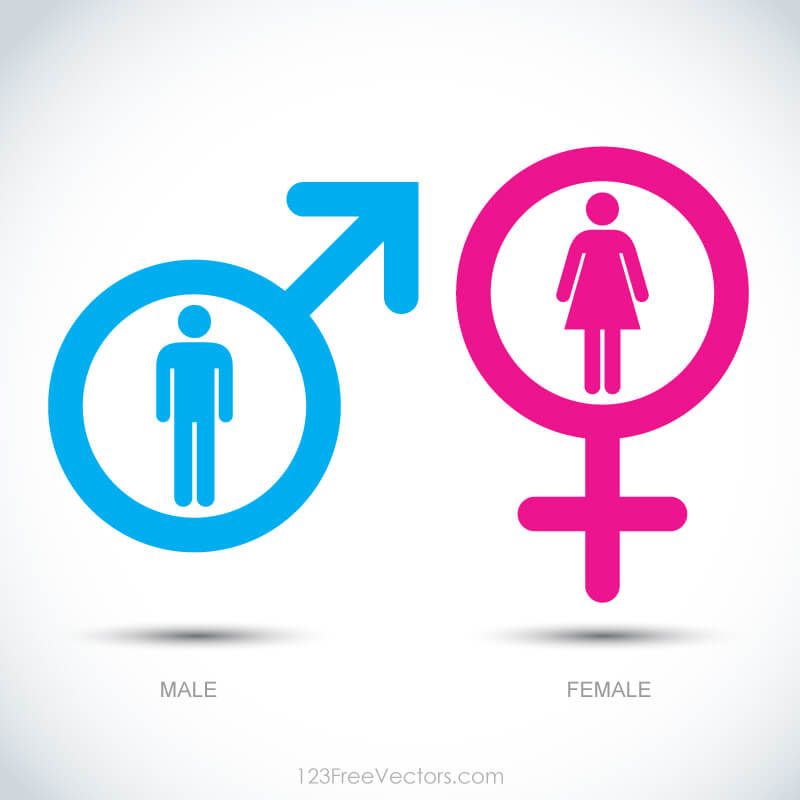 Here are a few tips on how to help your child grow into a harmonious personality, regardless of gender.
Here are a few tips on how to help your child grow into a harmonious personality, regardless of gender.
1. Set an example
Work with negative attitudes about gender education should begin with yourself. If dad often cooks dinner or vacuums the apartment, then the child will not have the idea that cleaning and cooking are “women's” duties. nine0007
✅ Today Liza and her dad are cooking dinner, and mom and Petya are going to buy groceries. Separation of duties helps to effectively build a life.
2. Let the child experience emotions
It is necessary to convey to children: I ≠ emotion, I'm angry ≠ I'm bad, I'm scared ≠ I'm a coward. This is a way of prohibiting emotions, which can lead to disharmonic personality development and a lack of empathy, an inability to live one's emotions and express them correctly. Constant suppression of emotions can lead to a large number of diseases, as well as the formation of abusive character traits. nine0007
“Children need to be taught the importance of all emotions and how to express them in an environmentally friendly way.There are no bad and good emotions, each is given to us to adapt and save life. If a boy cries, this will not make him weak - on the contrary, he will learn to pronounce feelings.
Irina Mironova
osci, cry, if you want. I will hug and pity you. Showing feelings is great. nine0007 ✅ It's okay to be afraid. I will always protect you.
✅ I understand that you are angry. Let's talk about what makes you angry?
<
3. Let your child choose activities
Do not ban a club because it is “for girls” or “for boys”. Let the child try as much as possible. Some classes will get bored and fall off on their own, and something will become a matter of a lifetime - do not cut off your son or daughter's wings.
<
✅ You will succeed. You will achieve everything you want.
✅ If you like exact sciences, study them.
✅ You may like dancing, not martial arts. Choose any activity.
4.
 Destroy gender stereotypes in games
Destroy gender stereotypes in games Launch Barbie into space or make Spider-Man a loving father who lulls his daughter to sleep. Buy toys regardless of gender - any child can enjoy playing with cars, dolls, robots and children's kitchen, hairdresser and shooting games. nine0005
✅ All right, son, we'll buy you a pram. You can babysit toys in it.
✅ Daughter wants to drive a toy car - give her a birthday present.
What is the result
Today's children and adolescents think about things that did not occur to their parents at the same age - from environmental problems to gender issues.
Rigid gender roles are gradually becoming a thing of the past. Both men and women study, work, learn new skills, solve problems, come up with ideas and achieve goals. nine0005
Gender education of children should be in keeping with the spirit of the times. If you are not satisfied with gender education at school, transfer your child to another form of education. You can study part-time or family school - master the program at home, and go to school only for certification.
How to raise a child outside of gender stereotypes
Life with children
Andrey Borodkin
December 3, 2018 19:47
We have written many times about the dangers of gender stereotypes: from violence against women to sexism in relation to people . Andrei Borodkin, father of five-year-old Eva, decided that he would raise his daughter outside of gender boundaries. At the request of Afisha Daily, he wrote whether it was possible to overcome the idea of "male and female" at least within the family. nine0005
Scotland is the most popular country in our family. Not a day goes by that I don't talk about kilts while arguing with my daughter about "skirts are just for girls." Gender stereotypes have taken a firm place in five-year-old Eva's view of the world, and my wife and I fight every day to change this. With the birth of children in millennial families, a light of other shades appeared at the end of the pink-blue tunnel.
A Brief History of Color
Gender and sex are different concepts. Sex is a biological fact. Gender is a social phenomenon. In other words, a gender stereotype is a simplistic, boxy representation of the male and female way of life that has historically developed in a particular culture. One of the clearest examples of how gender stereotypes penetrate our lives is the division of children's clothes and toys by color according to gender. But it was not always so. nine0005
Until the First World War in the United States, for example, it was customary to dress both boys and girls in white cotton dresses, which was dictated by practicality: cotton could be washed many times, no matter what the baby got dirty. In those days, parents did not focus on the field, but reasoned like this: I will put on a cotton dress, whoever it is.
In 1904, Mellin's Food Company, which made products for babies, held a curious contest: participants were asked to guess the sex of children in photographs.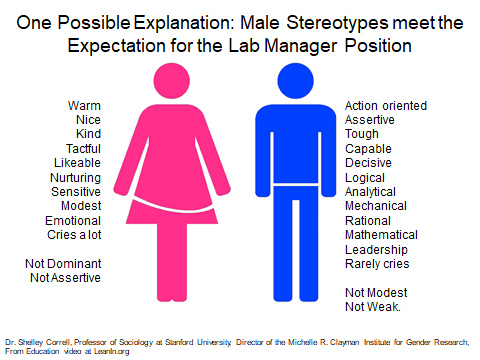 No one has been able to give the correct answer. At 19In the 1920s, the Baby Bobby paper doll, popular in the United States, came with pink clothes, even though Bobby is a boy. Another boy doll's wardrobe in 1910 included a pink coat, hats, skirts, knickers, and tunics. In 1927, Time magazine printed a chart of colors suitable for girls and boys according to leading fashion stores. It turned out that they recommend pink for boys and blue for girls.
No one has been able to give the correct answer. At 19In the 1920s, the Baby Bobby paper doll, popular in the United States, came with pink clothes, even though Bobby is a boy. Another boy doll's wardrobe in 1910 included a pink coat, hats, skirts, knickers, and tunics. In 1927, Time magazine printed a chart of colors suitable for girls and boys according to leading fashion stores. It turned out that they recommend pink for boys and blue for girls.
And even in the 1960s, children's clothing catalogs were filled with gender-neutral items. And a decade later, the situation has not changed. nine0005
Until the mid-1980s, children's clothing was fairly neutral. Everything was changed by prenatal diagnostics, which made it possible not only to identify hereditary diseases at an early stage of pregnancy, but also to determine the sex of the baby.
Marketers from the world of children's fashion quickly realized how to build a new business, and parents, having learned the gender of the child, ran to the stores for things "for a boy" or "for a girl".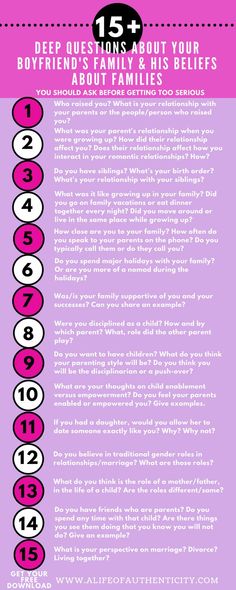
Now you can find color dictates in everything from a pink car seat to a blue train. In many countries, the process of determining the sex of a baby has been turned into a ritual: all over the world, Gender Reveal Parties have begun to be held, when the gender of an unborn child is announced to the assembled guests. The interior, menu and dress code at such parties are created in only two colors. nine0005
Another major reason for this color separation is the increase in consumption among children. Psychologists believe that children at the age of 3–4 are just beginning to realize their gender, and such ideas become stable only by the age of 6–7. But already at an early age, babies are the subjects of advertising and therefore they accept stereotypes that a woman, for example, should have long hair, and she should also be dressed in a dress.
Who broadcasts gender stereotypes and how
There are parents who reject gender stereotypes, including in clothing, toys, and expression of emotions.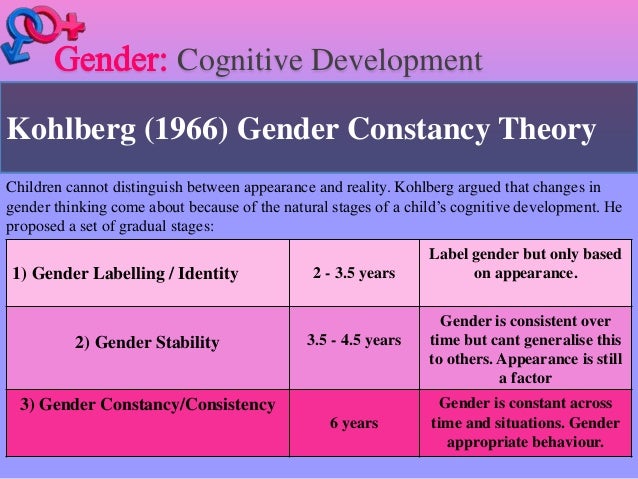 These are millennial parents. But along the way, they meet resistance. In general, there are many people who influence the baby's ideas about gender.
These are millennial parents. But along the way, they meet resistance. In general, there are many people who influence the baby's ideas about gender.
First, the mothers and fathers themselves
When we say that the social environment contributes to the development of gender stereotypes, we seem to relieve ourselves of responsibility. This faceless “environment” forbids boys to cry, tells girls that they must be able to cook, “environment” uses the words “girl” and “boy” in a dirty sense. But the main "environment" for a child under the age of 3 is the parents. nine0005
Relatives
More than one hundred memes are devoted to grandmother's menu, but our relatives also influence the gender perception of babies. Gifts that are clearly separated by gender, stories like “I already herded goats at your age”, and most importantly, a personal example - all this affects the acceptance of gender stereotypes by a child.
Caregivers and nannies
A wonderful study was done in China.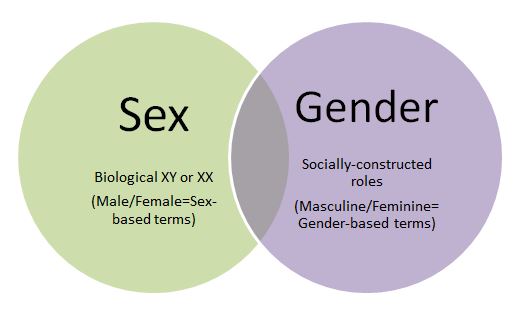 Toddlers aged 5–7 years were given toys of different colors and divided into two groups. The first was told that colors had nothing to do with their gender. The second is that toys are green for boys and yellow for girls. As a result, in the first group, the children took toys of all colors, and in the second group they chose colors according to the division they heard from adults. nine0005
Toddlers aged 5–7 years were given toys of different colors and divided into two groups. The first was told that colors had nothing to do with their gender. The second is that toys are green for boys and yellow for girls. As a result, in the first group, the children took toys of all colors, and in the second group they chose colors according to the division they heard from adults. nine0005
This is a vivid example of how easily kids are influenced by gender stereotypes at this age, so the role of educators, nannies, and babysitters is very important. As a rule, children spend a lot of time with them and adopt their attitude towards gender.
Media
It is not possible to place a child in a case in the likeness of the hero of Chekhov's famous work. The flow of information in the modern world is huge, and kids begin to get acquainted with it as early as the age of three. According to some data, 17% of children at this age use smartphones and 67% watch TV every day. nine0005
Change has already begun
The real world is far from a black and white concept.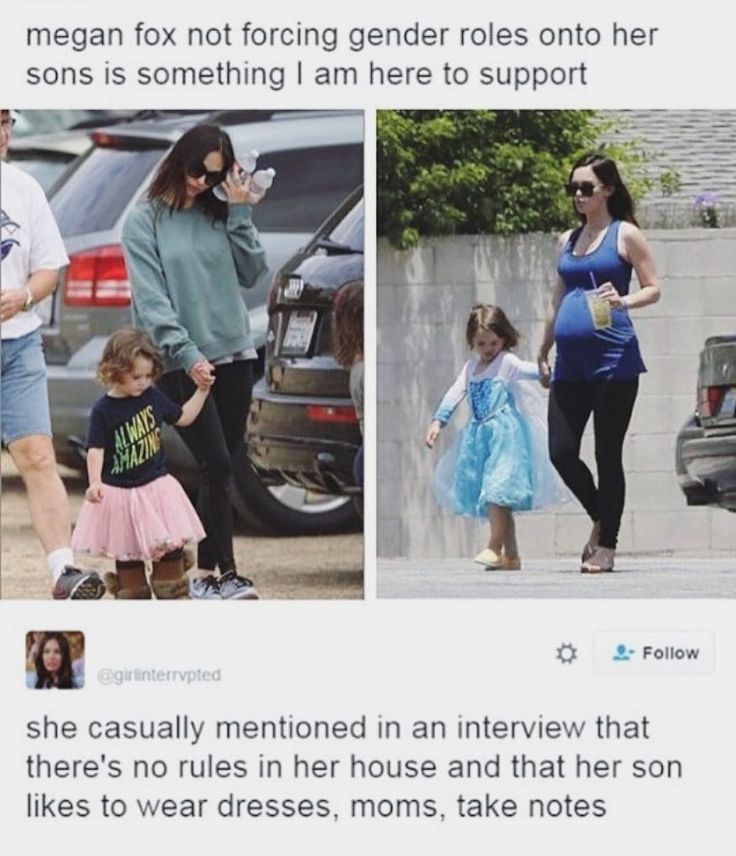 And our contemporaries seem to have begun to understand this.
And our contemporaries seem to have begun to understand this.
According to the analytical report of the Grant Thornton International Foundation, the number of women leaders around the world is growing every year, and Russia is the leader here: 47% of high positions are occupied by women. The gender pay gap, that is, the amount by which a woman's average wage is less than a man's average wage, is also declining every year. For the European Union, this figure is 16.4%, in Russia 27.4%. nine0005
Changes also apply to mass culture. The #MeeToo movement has affected many areas of life, and men have also begun to tell their stories related to discrimination and share their experiences under this hashtag. Some companies, including those influenced by the movement, have begun to produce catalogs of products for babies, where boys and girls do housework together.
Characteristic changes can be seen in the Disney cartoons of recent years. If you look at female characters, they are increasingly asserting their right to choose, individuality, independent decisions (Rapunzel: A Tangled Story, The Princess and the Frog, Brave, Moana).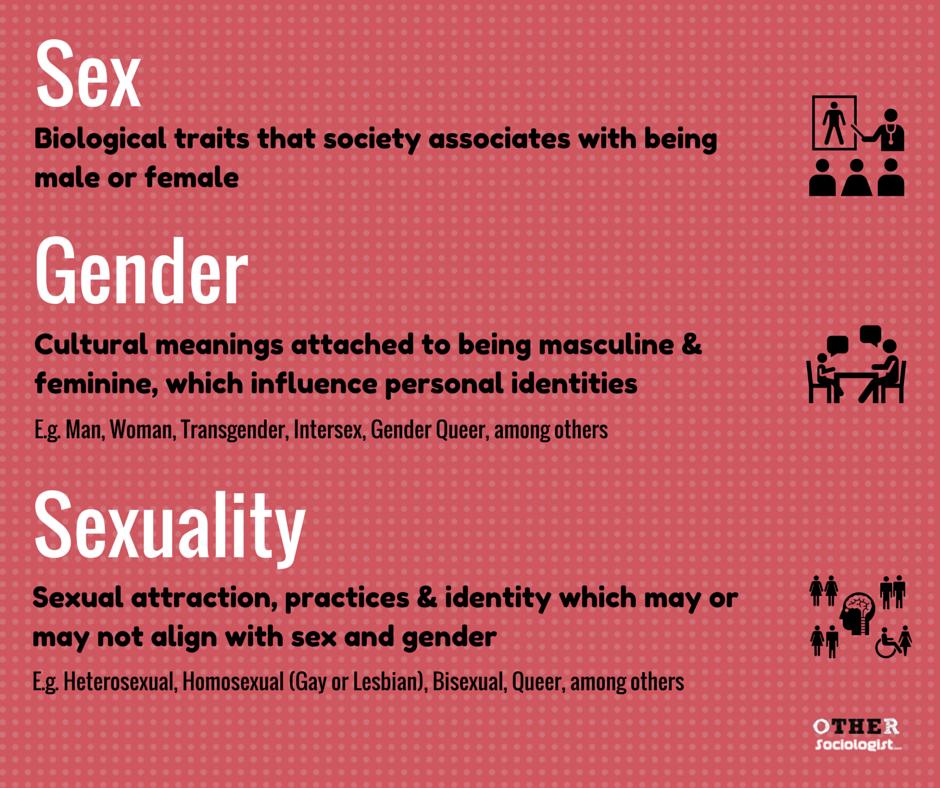 And male heroes learn to take on more responsibility (Ralph, The Princess and the Frog). The cartoon "The Incredibles-2" is indicative, where the main topic was the distribution of roles in the family: dad stayed at home with the children, and mom went to save the world. nine0005
And male heroes learn to take on more responsibility (Ralph, The Princess and the Frog). The cartoon "The Incredibles-2" is indicative, where the main topic was the distribution of roles in the family: dad stayed at home with the children, and mom went to save the world. nine0005
Is a future without gender stereotypes possible and what can a parent do
Do all these changes mean that the generation of parents born at the turn of the 20th and 21st centuries will be able to completely eradicate gender stereotypes? Most likely no.
One of the first works on the influence of gender stereotypes was the empirical research of the American psychologist Inge Broverman. Back in the 1970s, he confirmed the deep cultural roots of gender stereotypes. One generation of even the most responsible parents will not be able to defeat them. But in Sweden, for example, they tried. nine0005
It was here that two gender-neutral kindergartens were opened last year, where it is forbidden to call children “boy” and “girl”. Educators are instructed to address babies only hen, or "it".
Educators are instructed to address babies only hen, or "it".
Behind the news that stirred up the Russian media so much, other details of the educational process in these institutions were hidden. They do not provide separate areas for playing dolls or constructors. The toys are mixed so that girls and boys can play together. However, even in Sweden itself, most experts agree that gender-neutral kindergartens are unlikely to solve the problem of stereotypes. After all, during the transition to primary school, children will still face the delimitation of social roles based on gender. nine0005
But that doesn't mean we parents shouldn't try to change things. Every day, waging this struggle in ordinary everyday situations - in communication with kids, games, disputes - we bring closer the moment when children will be able to grow, express themselves and achieve success without regard to what gender they are. What can parents do to combat gender stereotypes? Here are the rules that I personally try to follow.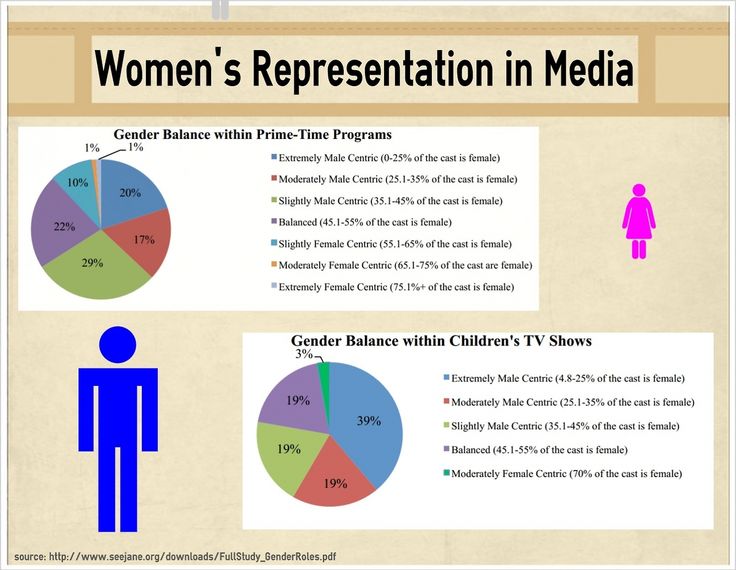
Set an example
Children imitate and trust the model of behavior they see in the family. If you respect your partner, share household chores with him, do not tolerate the humiliation of others towards you or your spouse, the child will be less subject to gender stereotypes. My daughter will not faint at the sight of a man with a vacuum cleaner, she also always helps me with minor repairs. In truth, sometimes she does even better (but that's a secret). nine0005
Allow your baby to experience emotions and choose activities
Have your son cry while watching Mulan or The Lion King (I still cry myself) and your daughter play ball in the yard. Freedom of expression is important in combating gender stereotypes from an early age. And yes, it does not mean that the child wants to change sex.
Fantasize
Cut politically correct Barbie's hair and send her into space, and teach Spider-Man to take care of a pet. The more often you destroy gender stereotypes in games with a child, the less likely it is that he will succumb to them.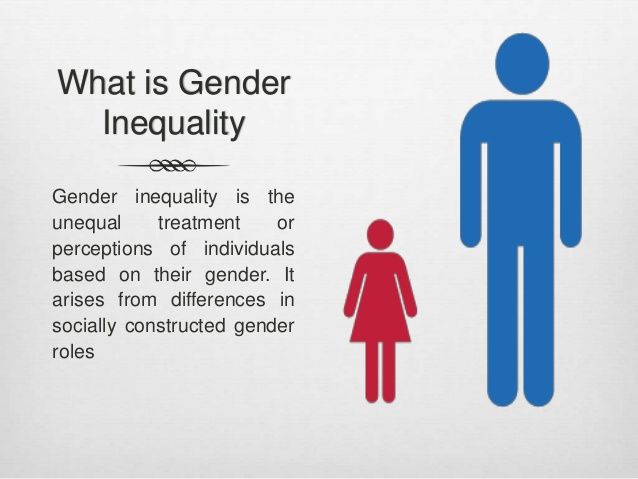 When we play at home, the role of the grandmother from Little Red Riding Hood always goes to me, and the spouse can play the wolf. The daughter also often transforms into heroes of different sexes. nine0005
When we play at home, the role of the grandmother from Little Red Riding Hood always goes to me, and the spouse can play the wolf. The daughter also often transforms into heroes of different sexes. nine0005
Use different colors
My daughter has a dark-skinned Moana who she plays with like she does with other dolls. The same principle works in gender stereotypes - buy toys and things of different colors, explaining that the baby can use them without restrictions.
“It is important to remember that sexual orientation and gender identity are two different things. The first is attraction to people of a certain gender (sensual, romantic and erotic), and the last is about realizing oneself belonging to a certain gender, taking on social roles, values and responsibilities that correspond to this gender. nine0005
By the age of three, the child already learns the roles for different sexes that the environment broadcasts: all the stereotypes about cars and dolls, pink and blue, and any other patterns.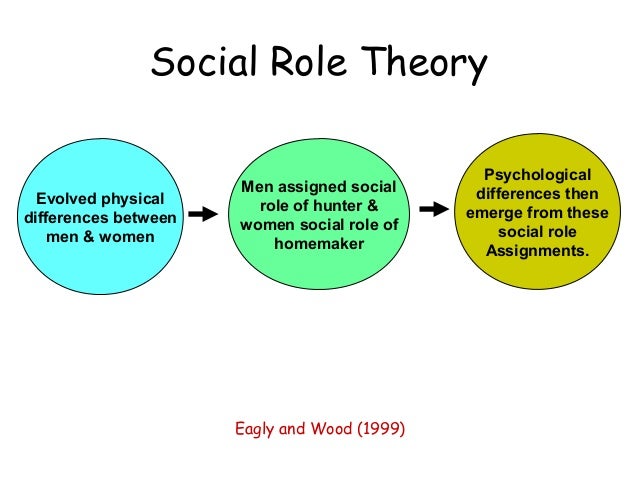
If only mom cleans the house, then he will get the feeling that cleaning is only a woman's business.
We do not need to leave the child completely without boundaries, asking the little son whether he considers himself a boy or a girl. He wants to wear a skirt or trousers to the garden today. This deprives the child of a guideline, "drives him crazy", leads to emotional instability. But at the same time, it is important not to put labels about pushing a stroller, for example, only girls (after all, this is not true, men can also take care of children - and this is normal). Or to shame him for the fact that in the store he suddenly wanted to buy a coloring book with flowers, and not with cars. And even more so, do not associate his momentary interest in the doll with his sexual orientation. nine0005
The good news is that modern parents are actively interested in child psychology, trying to figure out what's what. And the more adequate, understandable information there is on this topic, the easier it will be for parents to cope with situations where their fear leads to education according to patterns and stereotypes.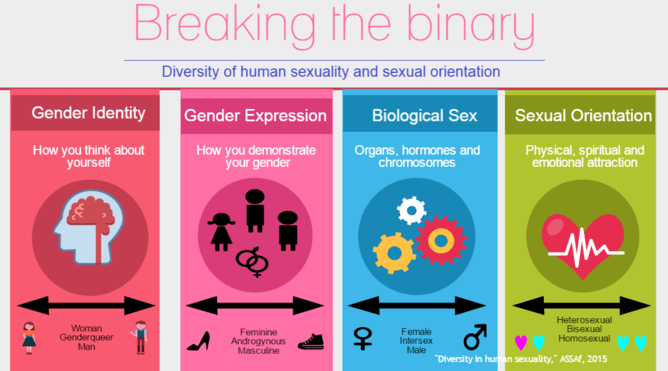
“The problem with gender stereotypes is that they are so woven into everyday life that they don't feel foreign. And they are everywhere. Stereotypes seep even into families where parents attach great importance to education without stereotypes, refute them by their own example, and discuss these issues with children. Because already in kindergarten, the requirements for the appearance, clothing and behavior of boys and girls are different, and the stereotypical gender differences themselves are included in the curricula. At school, attention to differences is exacerbated by division into groups, intra-collective strict restrictions on behavior appear, which also reflect society's beliefs received through families and preschools. nine0005
Our whole world is arranged in such a way that a girl is expected to have long hair, a skirt, shyness, coquetry, whims, striving to please outwardly, readiness for domestic and reproductive work, non-resistance to violence, physical awkwardness, diligence, obedience.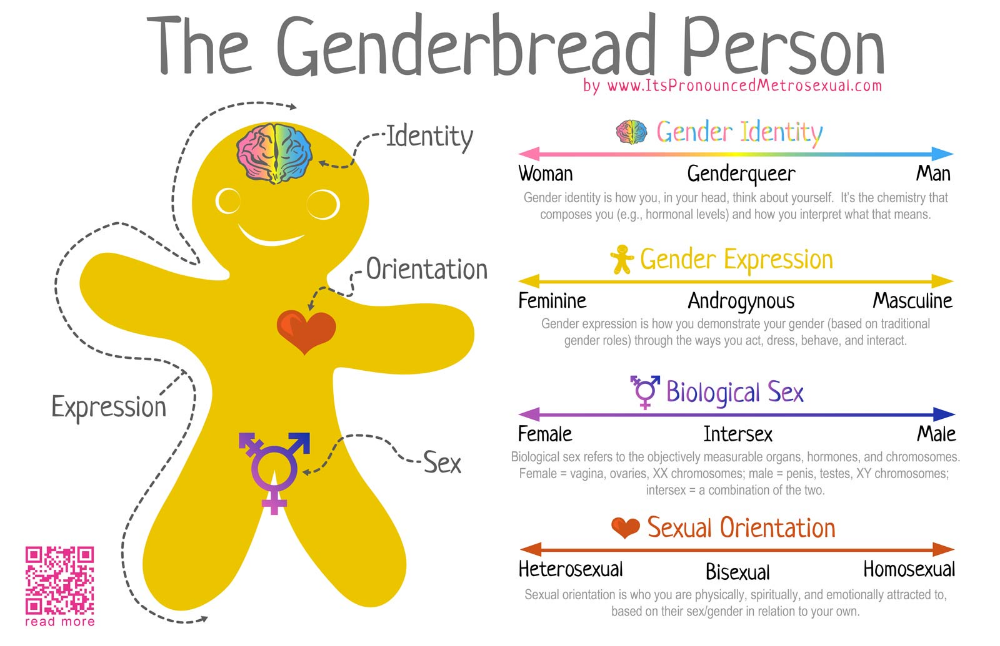 From a boy - short hair, leadership qualities, activity, dexterity, readiness for aggression, inattention to appearance, extreme emotional restraint.
From a boy - short hair, leadership qualities, activity, dexterity, readiness for aggression, inattention to appearance, extreme emotional restraint.
I try to pass on to children the habit of attentive observation of what is happening around them, of direct opposition to gender stereotypes, of activism - discussing their observations with friends. Because there are only two ways - to be silent and support or not to be silent and resist. nine0005
I don't think Millennials will be able to completely eradicate gender stereotypes. But that doesn't mean you can give up. Changes are coming, and today's teenagers are already much freer than their parents. The contribution of each and every one of us affects what society will be like.”
“It seems to me that the influence of gender stereotypes in the modern world is no longer so strong. Most parents today are changing, constantly gaining new knowledge, trying to control what they say to their children. In addition, children themselves today are developed and oriented in their rights, from an early age they stop their infringement.